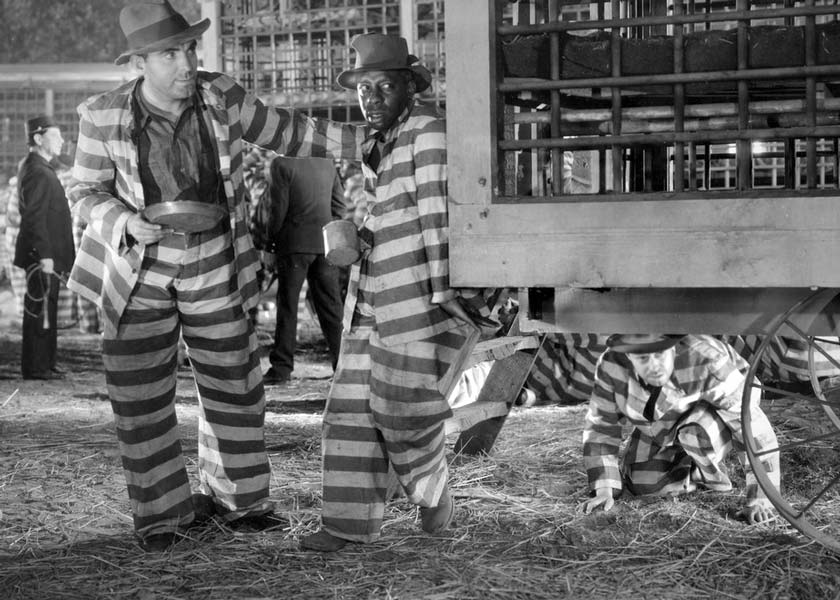Synopsis
Barney Slaney (O'Brien), a railroad engineer, has stopped his train near the work site of the chain gang overseen by his childhood enemy Ed Perkins (Douglass Dumbrille). Perkins hints that Barney's beautiful wife, Marybelle (Kennedy), is seeing another man. One evening soon afterward Barney goes home early and finds Marybelle with Grover Perkins (Arthur Vinton). Barney attacks Grover. Later that evening, Barney visits his father to tell him that he has killed Grover and Marybelle. At his trial the judge is merciful and sentences Barney to life on the chain gang rather than to hanging.
Life on the chain gang is brutal. The prisoners spend their days digging up and breaking rock, and their nights confined in small cages inside a larger cage. Chain gang boss Ed Perkins is sadistic and vengeful. The chain gang is marched out to attend the hanging of four black men. One by one the men are hanged, and when the rope breaks before the last man has died, he is shot to death. During a yellow fever epidemic, Perkins and the guards transport the chain gang to a small city to bury the fever victims. Under the threat of catching yellow fever themselves and cruelly worked at the burials, the prisoners riot and attack the guards. Barney beats up Perkins and escapes. A day later, Barney stops at a house to ask for food. He finds a young woman, Lorraine (Stuart), whose parents have been killed by the fever. After Barney burns the infected house, she leaves with him in her father's wagon. They stop for the night at a farm, and tell the farm couple that they are married. Although the farmer realizes that Barney has escaped from the chain gang, he does not turn him over to the sheriff. Eventually Barney and Lorraine reach the state line and cross over into safety.
Discussion
Except for the happy ending, Laughter in Hell, based on a 1932 novel of the same name by reporter and novelist Jim Tully, is as brutal and shocking as the more famous I Am a Fugitive From a Chain Gang (1932). It is also an exemplary work of Pre-Code cinema with violence and cynicism that would have been restricted after enforcement of the Motion Picture Production Code began in 1934. Barney kills his wife and her lover without remorse. The men of the chain gang are subject to harsh and inhumane treatment. The hanging scene is particularly realistic and intense. In an ending that would have been specifically prohibited by the Code, which stipulated that criminals had to be shown receiving just punishment, the double-murderer Barney Slaney escapes to a presumably happy life with his new sweetheart. Pat O'Brien has a forceful role as the wronged and vengeful husband and chain gang prisoner. Douglas Dumbrille, whose screen characters are often nasty and vindictive, plays the most villanous character of his career.
Other films produced during the brief Pre-Code Hollywood period from 1930-34 (before enforcement of the the Motion Picture Production Code restricting profanity, violence, sexuality and cynical content from films) include The Bachelor Father, Blondie of the Follies, Employee's Entrance, Hat Check Girl, A House Divided, The Kiss Before the Mirror, Ladies They Talk About, The Maltese Falcon, Safe in Hell, She Had to Say Yes and Ten Cents a Dance.

